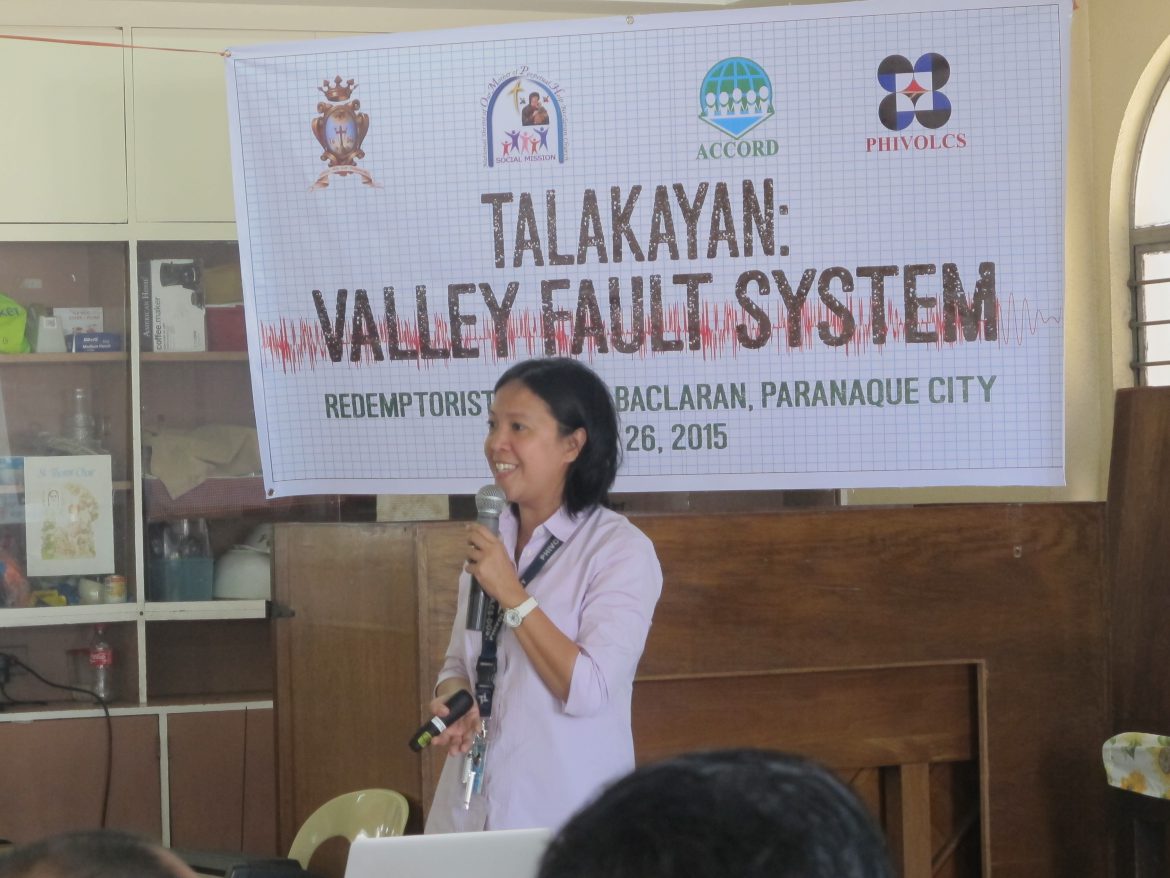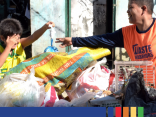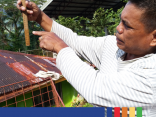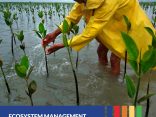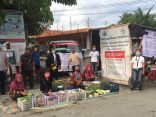In photo: Ms. Joan Salcedo of PHIVOLCS serving as main resource speaker for the forum.
One day before the 149th anniversary feast of their historic church, the Redemptorists of Baclaran and their lay staff attended an earthquake preparedness forum. The event signifies their commitment to start a longer-term disaster risk reduction (DRR) program that would ensure the safety of thousands of devotees and the church's surrounding communities.
In photo: Ms. Joan Salcedo of PHIVOLCS serving as main resource speaker for the forum.
One day before the 149th anniversary feast of their historic church, the Redemptorists of Baclaran and their lay staff attended an earthquake preparedness forum. The event signifies their commitment to start a longer-term disaster risk reduction (DRR) program that would ensure the safety of thousands of devotees and the church's surrounding communities.
Organized in partnership with non-government organization Assistance and Cooperation for Community Resilience and Development (ACCORD), the forum entitled "Talakayan: Valley Fault System" gathered together 130 people, including priests, seminarians, social ministry staff, lay ministers, and youth volunteers. Ms. Joan C. Salcedo, supervising science research specialist at the Philippine Institute of Volcanology and Seismology (PHIVOLCS), served as main resource person.
Demystifying the science behind earthquakes and the resulting hazards for ordinary citizens was an important objective for the event. Salcedo utilized analogies in her explanations such as, "The energy we use to throw a punch is like the earthquake's magnitude, while the feeling after getting punched is similar to its intensity." Participants were introduced to the West Valley Fault, and understood that despite Baclaran being farther away, they would still experience the same intensity of ground shaking as those nearer it. Given the Church’s proximity to Manila Bay, they also understood the possibility of facing tsunamis up to 3.5m in height if an 8.3-magnitude earthquake from the Manila Trench strikes.
Instead of being afraid, the participants became more interested to listen. The discussion then shifted to disaster risk reduction measures they can do on their own, including tips on assessing preliminary the safety of their houses. The need for planning was also emphasized, given that earthquakes, unlike typhoons and floods, do not give much lead time for preparation. "We need to know where the safe spots in a building are and how to get to them in case of an earthquake. We have to have our contingency plans on paper so that we can easily get them out and execute as needed," Salcedo said.
Marieta Lupig Alcid, ACCORD executive director, agrees with Salcedo. "Kung sa piyesta may handa, sa disaster may paghahanda," she said. ACCORD will work with the Redemptorists over the next few months to implement its DRR program. Trainings and technical assistance in the development of a contingency plan for the Baclaran church will be provided. Coordination with the local government offices concerned will also be done to assess the church's structural integrity. An earthquake drill in October, in time for the International Day for Disaster Risk Reduction, will test the contingency plan and the readiness of drill participants.
Bro. Ciriaco Santiago, chairman of the Redemptorists' Permanent Commission on Social Apostolate, expressed his gratefulness for the forum. "Knowledge is a big responsibility. The participants gathered here, along with ACCORD and PHIVOLCS, are united in our responsibility to ensure the safety of communities we serve. We will do so by involving them in building our collective resilience against disasters," he said.

